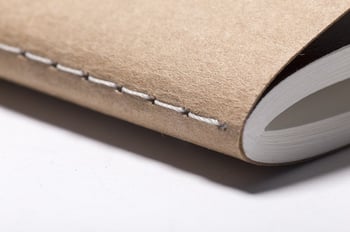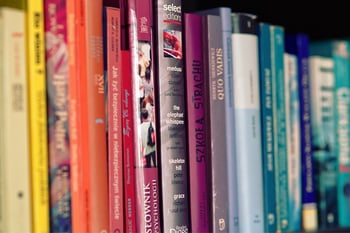Have you ever wanted to self publish a book? Here at TPI we've printed a variety of short-run book projects, ranging from personal art and photography collections to short stories and poetry. Books are some of our favorite things to print, it's always exciting for our clients to hold their work in their hands for the first time. We've come up with a list of things to consider to help your next book printing project turn out great.
 1. Paper is Everything
1. Paper is Everything
The paper you print your book on is one of the most important choices you'll make. Not only will the paper determine the cost of the book, it sets the overall feel for the entire piece. The best paper to use depends largely on the content of the book itself. If your book is really text heavy, an uncoated stock will probably serve you best. Type reads well on uncoated paper, and it just feels great between your fingers. Are you creating a book full of photos? Go with a coated paper to make sure your images really stand out. Coated paper makes color pop off the page and comes in different finishes like glossy and dull to choose from. Not sure what to go with? Ask to see a sample page or two printed on different papers to make sure you get the feel you want.
2. Size Matters
Picking a size to format your book in is another really important choice. Consider the type of book you're creating, and what the end use will be. If it's a coffee table book, go big. Let it really be a statement piece. If you want your readers to curl up with your book and read for hours, try making it a manageable size that's comfortable to hold. The size of your book also greatly influences the price. If we can print multiple copies of your book on one press sheet, you'll see some savings. Small size adjustments can make a big difference in time and materials. For example if we're digitally printing book blocks on our standard 12x18 sheets, we can only fit 2 copies of a 6"x9" book, but we can fit 4 copies of a 5.5"x8.5" book. That means half the amount of press time and paper which will significantly cut the cost of your total book printing price.
 3. Bind it Together
3. Bind it Together
Another thing you'll have to think about is how you want your book to be bound. There are many diferent styles of binding available, the three we use most often at TPI are perfect binding, saddle stitching, and spiral binding. Perfect bound books are secured by gluing a stack of pages to the cover on the binding edge. Most soft cover books utilize perfect binding, Saddle stitched books are a set of folded, nested pages held together with long staples. Many magazines and comic books use this type of binding. Spiral binding is achieved by punching small holes on the binding edge of the pages and inserting a coil into them. This type of binding is used a lot for manuals and other instructional booklets so you can access a single page easily. Ask your printer more about which type of binding makes the most sense for your book project.
4. Don't Ignore Design
The layout of your book is really important to consider from front to back. Everything from your cover design to the typeface you use for your body copy should be carefully considered. If you have a book full of text, choosing a typeface is a big decision. Different typefaces take up different amounts of space so swapping from one to another or adjusting the point size and leading can increase or decrease the size of your book by a number of pages. It's also important to think about the cover design for your book. Make sure it stands out and speaks for the content inside your book. Also make sure you check with your print provider about how they would like the book files set up, it's an important step to get your book printed right.
 5. Cover it Up
5. Cover it Up
Deciding what type of cover to use for your book is a big step. Hard cover versus soft cover is usually the first choice you have to make. As far as digital printing goes, it's a lot more affordable to go with a soft cover book, hard cover books require additional binding and finishing which can add a lot to the cost. If you go with a soft cover book, you'll still want to make sure that the cover is protected from everyday wear and tear. The best option for that is to UV coat the cover. UV coating comes in both matte and gloss finishes, and it ensures your cover wont rub off or scratch. If your book is going to be handled a lot instead of sitting on a shelf, you'll definitely want to add a coating to the cover to protect it over time.
We hope this blog has given you some things to think about and will inspire you to get started on a book project of your very own. What else do you want to know about book printing?

